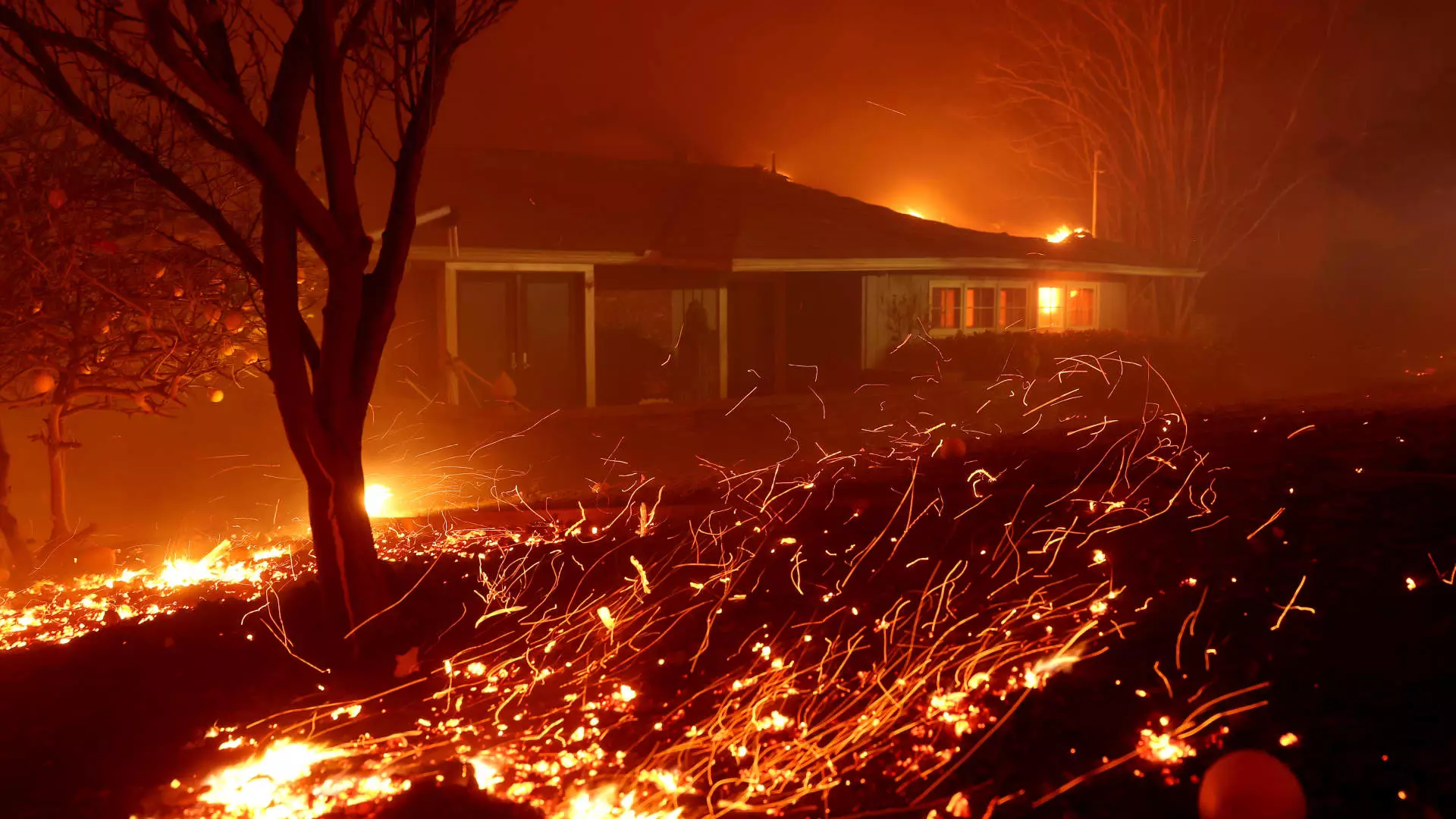The economic repercussions of climate change are becoming increasingly evident, particularly in light of recent events such as the wildfires in Los Angeles. Although the total financial toll of these disasters is yet to be fully assessed, it is clear that the repercussions will extend far beyond immediate property damage. As insurance costs are projected to rise, the implications for real estate markets, both locally and nationally, are staggering. According to analyses by climate risk experts, the landscape of housing values could drastically shift by mid-century, with significant losses anticipated across the United States.
As climate-related catastrophes become more frequent and severe, the insurance industry is reevaluating how it prices risks. Recent forecasts suggest that the average national insurance premium could rise by as much as 25% over the next three decades. This increase is a direct reflection of the dual pressure from historical underpricing and the escalating risks posed by climate change. Insurance costs tend to serve as a bellwether for property market stability; as insurance becomes more expensive, the cost of homeownership also rises, translating to lower home values. The First Street report highlights a grim future: by 2055, around 84% of U.S. homes may experience diminished worth, compounding to a staggering total of $1.47 trillion in potential losses.
The implications of climate change-induced value depreciation are not uniform across the country. Certain regions, especially those prone to natural disasters, could experience losses so pronounced that home values may be cut by half. States like Texas, Florida, and Louisiana are identified as particularly vulnerable. Here, local economies could face devastating consequences not just for homeowners but also for the broader market, as these losses trickle up to affect surrounding communities. In less affected areas, the overall property value might only see a slight decline of about 3%, but the potential for localized economic distress is pronounced.
As leading experts such as Dave Burt of DeltaTerra Capital note, an alarming shift is occurring within the real estate market—one reminiscent of the pre-2008 financial crisis. Burt, who gained notoriety for predicting downturns in the subprime mortgage market, asserts that at least 20% of U.S. homes will soon suffer from the repercussions of climate change. This could lead to significant corrections in property values, with affected markets potentially dropping by 30% within a short span of five years. These projections are not just theoretical; they are rooted in comparable historical precedents where economic forces were thrown starkly off-balance by environmental factors.
The economic landscape could face additional pressures such as increased property taxes aimed at funding resilience measures within communities. Higher maintenance and energy costs are expected as well, adding layers of financial burdens on homeowners. The resulting strain on the mortgage market could mirror the foreclosures witnessed after previous climate disasters, such as Hurricane Sandy, which resulted in a striking 46% increase in foreclosures in affected areas. With lending giants like Fannie Mae reassessing their strategies, the risk associated with climate change is becoming harder to ignore.
As we confront these shifting tides, it becomes crucial for both investors and policymakers to adopt proactive strategies. Understanding the evolving landscape of climate risk is essential for mitigating financial fallout. Institutions like DeltaTerra are taking the lead in crafting strategies that not only hedge against imminent market shifts but also recalibrate risk exposure in portfolios. Moreover, federal policies must adapt to provide necessary infrastructure enhancements aimed at reducing vulnerability to extreme weather events.
Unfortunately, recent governmental decisions have stifled progress in addressing these looming dangers. The Trump administration’s suspension of the Federal Flood Risk Management Standard may hinder the rebuilding of critical infrastructure, thereby exacerbating future vulnerabilities. Without sufficient federal standards, efforts to bolster resilience against climate risks are likely to falter, leaving communities ill-prepared for the multifaceted threats posed by climate change.
The convergence of rising insurance costs, plummeting property values, and the unfolding impacts of climate change presents a critical juncture for the U.S. real estate market. As communities and investors navigate the uncertainty, the importance of strategic foresight and adaptive policies has never been more crucial. Understanding the underlying dynamics that climate change introduces to economic systems will be key to fostering resilience in an ever-evolving landscape.

